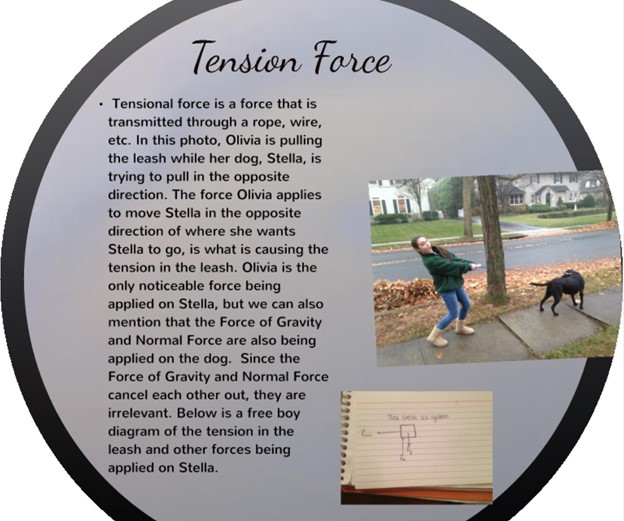Academic Digital Scrapbooking
Academic scrapbooking is not simply an arts-and-crafts assignment, it can be a digital teaching strategy to encourage students to better connect with the concepts of your course. This type of hands-on digital assignment allows students to tap into their creativity, take a break from the standard textbook, and interact with the content of your course.
Academic scrapbooks are digital books or posters that can include:
- annotations
- video
- audio
- links
- photographs
They are primarily a visual tool that presents a wealth of embedded information for students to explore at their leisure or through a guided presentation on an interactive whiteboard.
As with any teaching strategy, you should not introduce scrapbooking just for the sake of it. You should be intentional, adhere to learning objectives, and uphold quality standards as you would for any assignment.
Is scrapbooking a form of plagiarism?
In part 2 of the APOP webinar, “Digital Scrapbooking: An Ethical Writing Strategy”, Martine Peters, Professor at Université du Québec en Outaouais, makes the case that “copying and pasting” only becomes plagiarism when the information is published without the proper attribution. In fact, “copying and pasting” is a part of the writing process where students collect information on a topic before they begin to write. Whereas, digital scrapbooking is defined as the process of remixing, assembling, or restating ideas and concepts with strategies that use digital technologies and lead to an original written production, says Martine Peters.
“From this perspective, digital scrapbooking is a constructive, creative, productive and evolving process, as the text can be continually modified by adding a new piece”
This is the perfect opportunity to teach students to cite sources and be mindful of copyright. Have your students go to Cite It! a CCDMD’s interactive tutorial that helps students cite sources correctly.
Why use scrapbooking?
Not many teachers implement scrapbooking as a learning activity. However, it can:
-
make concepts more tangible and help students better retain them
- encourage thinking at the higher levels of Bloom’s Taxonomy, specifically synthesis and evaluation.
- be targeted toward analysis and synthesis
- provide opportunities for you as a teacher, to discover and correct misconceptions
- offer flexibility for different student populations in the same classroom
- help students develop their multimodal literacy skills.
How to use scrapbooks?
Scrapbooking is the perfect opportunity for students to record their interpretation and reflect on their learning. Here are some scrapbook ideas to challenge your students:
- 5 random things about me
- Students share light-hearted things about themselves, as an icebreaker.
- End of session recap
- Students review and present what they have learned during the session.
- “Aha moment”
- Students capture a eureka moment when they understood a concept of the course
- Historical artifacts
-
Students consider how ordinary citizens contributed to and experienced certain significant historical events.
Creating a scrapbook depicting how people experienced the event can help students better understand how and why the event took place.
-
Students consider how ordinary citizens contributed to and experienced certain significant historical events.
- Real-life applications of the laws of physics
-
Students present an event they have witnessed to illustrate a principle of physics by including:
- personal photos
- newspaper clippings
- comics
- artwork
- etc.
They must evaluate each artifact and write a reflection on the progress they made in their understanding.
- Alternative book report
- Students create a scrapbook for a character from a book. They imagine pictures or mementos the character would include in a scrapbook and explain why they are significant.

Section of a physics scrapbook that presents applications of physics in everyday life. Source: Physics Scrapbook by Olivia D’Allesandro
Seems interesting, but you wonder how you will assess the scrapbooks? This rubric for electronic scrapbooks can be used as inspiration.
What digital tool to use?
- PowerPoint
With Microsoft, PowerPoint students can make digital scrapbooks or one-page posters that include audio and video commentaries, annotations, and texts. The advantage here is that students are probably already familiar with this tool and would not have to spend time learning how to use it. - Canva
User-friendly Canva offers a free plan with:- a collection of scrapbooking templates
- the ability to drag and drop files from your computer
- a media library with illustrations, icons, photos, etc.
- Glogster
In “Motivating Students to Write by Changing Their Medium from Paper and Pen to ICT Platforms”, Profweb editor, Andy Van Drom, explains how he used Glogster to have students tap into their creativity to come up with a multimedia poster rather than hand in a standard writing assignment. At the time, setting up an account was free, but now teachers have to pay a small fee.

An example of a Glogster poster, integrating text and images to enhance a writing assignment. (Source: Andy Van Dom’s article “Motivating Students to Write by Changing Their Medium from Paper and Pen to ICT Platforms”)
Final thoughts
Academic digital scrapbooking is an innovative method to have students respond to their readings. When creating their digital scrapbook, students must defend their choice of scrapbook entries or explain why each entry is important to the understanding of the topic.
This is a compelling way to get students to reflect on their learning and critically think about the concepts presented.
If you have worked with digital scrapbooks, please let us hear from you.


